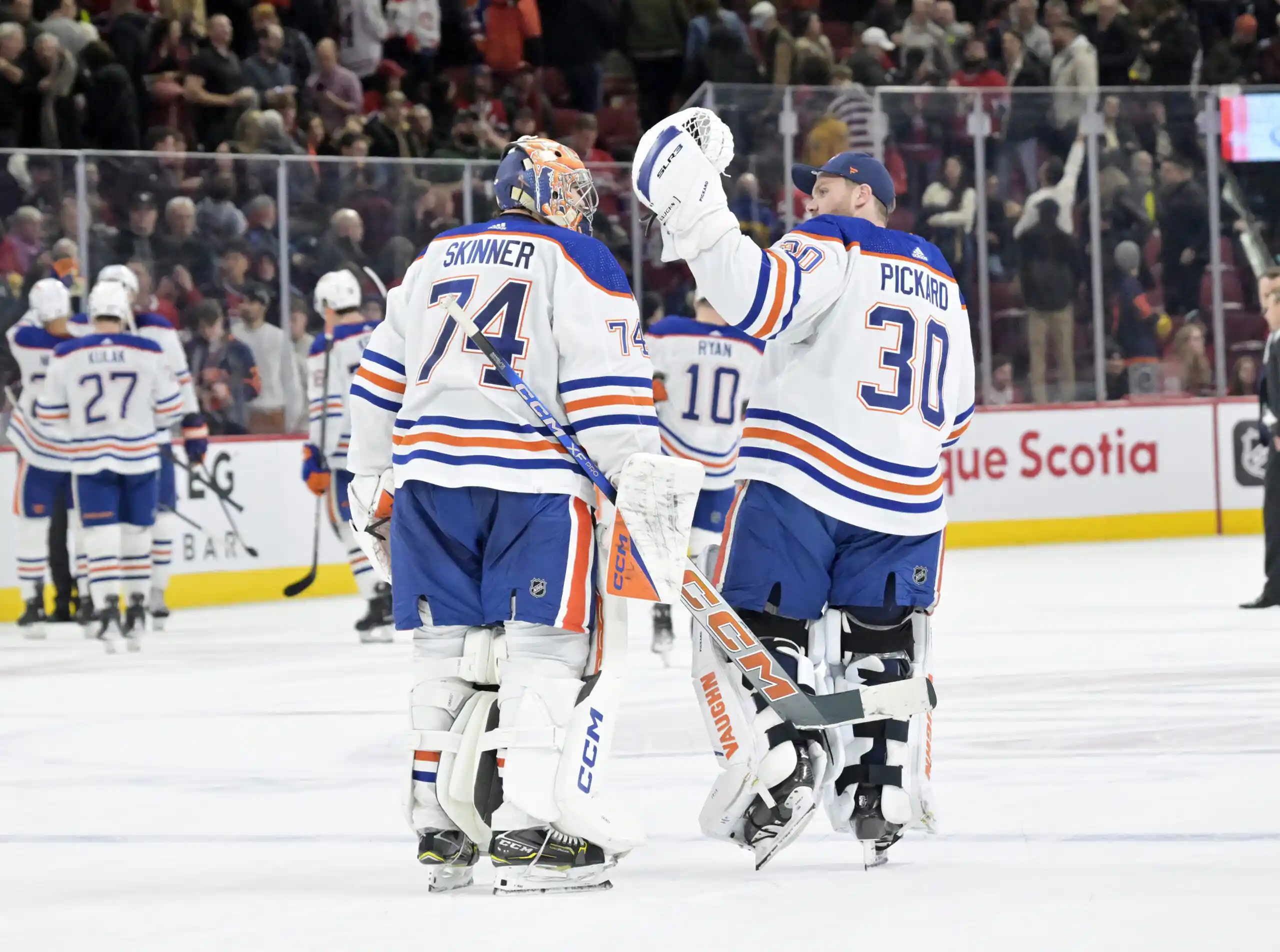Patrick O’Sullivan: Better Than You Think He Is

The trade deadline move that sent Erik Cole and a fifth round pick to Carolina in exchange for Patrick O’Sullivan and a second round pick was roundly praised in the media (and by me). It was more than a little disappointing when O’Sullivan didn’t bring the same form to Edmonton that he had in Los Angeles.
The basic numbers show us a startling drop-off:
- Los Angeles: 62GP – 14G – 23A – 37PTS, +1
- Edmonton: 19GP – 2G – 4A – 6PTS, -7
On the other hand, I really don’t think that O’Sullivan’s counting numbers are fully reflective of his play, for a couple of different reasons. The first item is shooting percentage. Players get hot and cold, but generally they revert back to their career shooting percentage after a while. Here are O’Sullivan’s numbers over his career:
- 2006-07: 44GP – 5.4 SH%
- 2007-08: 82GP – 10.0 SH%
- 2008-09 (LA): 62GP – 7.0 SH%
- 2008-09 (EDM): 19GP – 3.4 SH%
- Career: 207GP – 7.5 SH%
In Edmonton, Patrick O’Sullivan’s shooting percentage was less than half of what it was in L.A., 45% of his career number, and one third of his total from last season. Even if we were to imagine that he converted at the same rate he did in L.A., he would have scored twice as many goals.
The second item is on-ice shooting percentage. The first item looked at O’Sullivan alone, whereas this measures the shooting percentage of all of O’Sullivan’s line-mates when he was on the ice. Let’s do some comparisons (all numbers at even-strength):
- O’Sullivan in Edmonton: 5.1 On-Ice SH%
- O’Sullivan in Los Angeles: 7.5 On-Ice SH%
- Edmonton Team Average: 8.8 On-Ice SH%
- Worst Edmonton Number (Steve MacIntyre): 5.9 On-Ice SH%
I think it’s pretty clear that O’Sullivan’s number in this category is largely a result of luck. I don’t think it’s a stretch to say that better players help the play stay alive and thus help generate better chances for their line-mates, thus bringing up their on-ice shooting percentage, but for O’Sullivan’s number to be so low is farcical. His numbers are below a) his average in Los Angeles, b) the Oilers’ team average (and I think it’s fair to say that O’Sullivan is an above-average offensive player) and c) Steve MacIntyre’s team-worst 5.9 on-ice SH%. The Oilers took 156 shots at even-strength with O’Sullivan on the ice. If we were to bump O’Sullivan’s numbers up to his performance in Los Angeles, it would mean that he was on the ice for 4 more goals for at even-strength. If we were to bump that number up to the Oiler’s team average (since on-ice shooting percentage is 80% a result of line-mates anyway), that would mean O’Sullivan was on for 6 more goals for. Not only would that likely inflate his assists totals, but it would almost erase his -7 rating.
The third item is on-ice save percentage. Vic Ferrari conclusively showed that this is completely independent of the quality of an individual defending forward; rather, it’s affected by quality of opposition, quality of goaltender, and to a large degree by random variance. In other words, whatever the save percentage was behind Patrick O’Sullivan, we can be relatively certain that it wasn’t of his doing. Did that have any effect on his plus/minus (all numbers again at even-strength)?
- Patrick O’Sullivan’s On-Ice Save Percentage: .913
- Edmonton Oilers’ Team Average Save Percentage: .925
Patrick O’Sullivan was on the ice for 173 shots against at even-strength. 15 goals were scored against while he was on the ice; if we were to adjust his on-ice save percentage to the team average, it would only be 13 goals against.
The combination of these three effects to reduce O’Sullivan’s counting numbers is incredible. If we compensate for all of these factors (and assume that he would have continued to post assists at the same rate for projected goals) the difference is stark:
- Actual: 19GP – 2G – 4A – 6PTS, -7
- Projected: 19GP – 4G – 7A – 11PTS, +1
That’s nearly double the output and an 8-goal swing. This isn’t to say that we should discard O’Sullivan’s actual performance; every player has hot streaks and cold streaks and over the course of the season these things tend to even out. The problem is with small sample sizes; when we start to break the season down into 20-game chunks, we can get a distorted picture because very few players produce four identical 20-game segments. Sometimes, the bounces go their way and they produce better results than are reasonably sustainable. In Patrick O’Sullivan’s case, his results (as compared to his actual play) were unreasonably low; over the course of a season they would certainly have been better. The lesson is not to underrate him based on the 20 games that closed out the season.
Recent articles from Jonathan Willis





